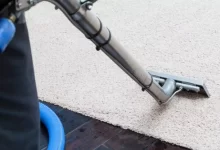Some Solutions Of Fixing Troubleshooting In An AC

An air conditioner, like any other device, wears out with time and requires routine maintenance to perform properly. A specialist cleans all filters completely during AC service to eliminate pollutants and circulate clean air throughout the room. If you have to use your air conditioner all year or only in the summer, the air filters collect all contaminants.
Regular AC maintenance could improve AC performance while also lowering electricity expenditures. A non-serviced air conditioner could use more energy to deliver cold air or may not provide sufficient cooling owing to issues like gas leaks. During an AC’s regular maintenance, the technician will look for problems like a gas leak or any other problems that are preventing your AC from performing at its best.
In the long term, proactive maintenance, early diagnosis of problems, and resolution save money. When you go home, you expect to enjoy a calm evening in front of the air conditioner. But when you open the door, you are welcome with a blast of hot air. When you check your air conditioning system, you discover that the motor has died. You wonder why it always seems to occur at the worst time possible. It isn’t sufficient.
Steps of fixing troubleshoot in an AC
Your air conditioner could unexpectedly quit working, necessitating immediate repairs before the next heatwave. Inadequate maintenance could easily result in the failure of your cooling system.
As a result, it’s critical to recognize the most common AC problems and learn how to rapidly resolve them or to hire an expert to diagnose the AC unit. Your air conditioning equipment might fail for a number of reasons, including tripping circuit breakers and burst fuses. So here are a few common AC troubleshooting issues and treatments;
1. Low refrigerant
Your air conditioner uses refrigerant to remove heat and humidity from the air in your house or office. You wouldn’t have enough refrigerant to adequately cool the air if your system develops leaks in the refrigerant lines.
However, refrigerants could leak due to damage or poor maintenance, lowering the charge of your air conditioner. Low refrigerant levels cause frost to form around the condenser coils in your system’s outdoor unit. This type of ice prevents the coils from performing their heat-transfer function, resulting in less cold air blowing through your outlets.
Your air conditioner could also fail to turn on due to a lack of refrigerant. Modern HVAC devices are available with monitors that could identify when sections of the air conditioner are malfunctioning.
Solution: It’s not a good idea to try to fix low refrigerant levels on your own. If you believe your air conditioner has lost some of its charges, hire a professional to inspect it for leaks. A professional will fix any leaks and recharge the refrigerant to get your air conditioner back to working properly.
2. Blocked or dirty registers
Dust and other contaminants accumulate in the air registers over time. Pollen could attach to the air ducts as well. When air passes through the ducts, it mixes with the dirt and enters the air flowing around the house. As a result, allergy and asthma symptoms are exacerbated. If your air registers are unclean, they will lower the energy efficiency of your Ac unit, resulting in higher heating and cooling costs.
Solution: To begin, take off the air vents. This will almost certainly necessitate the use of a screwdriver. Next, suction up the dirt inside the vent hole with a portable vacuum or one with a line. Clean the inside walls of the vent opening with an old brush. Reach down into the “neck” of the exhaust hole, where the dust particles tend to collect. Scrub as thoroughly as possible, then vacuum to remove any loose particles you’ve cleaned out.
3. Thermostat problems
Thermostats that are configurable or smart make it simple to maintain a suitable temperature in your house. The thermostat may offer erroneous temperature readings if that is light enters the eye.
If your thermostat is not set up properly in your home, you will experience thermostat problems. It’s best if your thermostat isn’t in full sunlight and isn’t more than five feet away from the door. The thermostat will not work if it does not have enough power to operate. The thermostat, like any other piece of electronic equipment, requires batteries to operate. In order to monitor the thermostat, you need to charge the battery first.
Solution: Cleaning older thermostats is as simple as dusting the inside of the cover. To clean the contacts, place a piece of paper between them and wiggle it around to remove the filth. Look to replace your old thermostat with a smart one. This will solve any issues you are encountering and ensure years of trouble-free operation.
4. Air leaking
Troubleshooting your AC unit becomes essential when cold air leaks out and warm air leaks in. Insulation panels for use over the adjustable plastic side panels are commonly included in new window air conditioners.
You’ll want to double-check that your air conditioning system is ready to go before turning it back on. Preventing leaks is an important part of getting your air conditioner ready to work correctly. Leaks can cause costly damage to your home and suggest a problem with your HVAC system.
Solution: Remove the blockage in your drain pipe and clear the system of any mildew to get your unit working correctly again. Call a local air conditioning professional to help clean the blockage drain line safely and effectively.
If the destruction to the drain pan is only minor, an expert may be able to fix it. This problem, on the other hand, frequently necessitates the replacement of the drain pan.
Conclusion
To summarize, the main motive of this article is to provide some quick fixes of preventing troubleshoots that occur in an AC. The condenser unit (AC unit or heat pump) outside your home is only part of an air conditioning system. Split-system air conditioners often feature a large number of moving parts. An indoor air handler unit (furnace or fan coil), an evaporator coil, an air filter, a thermostat, and copper tubing (refrigerant lines) that connect the indoor and outdoor units are all included. To overcome and for repairing an air conditioner, you need to fix or solve the troubleshoots first.



